150 minutes, 74 Rieslings, 1 mouth. Madness? Ravenous for Riesling!
A friend of mine gave me ten little bottles / Of some special stuff that he brewed up his-self / So I took it and hid it down in my basement / But my wife found out about it and she told me to get rid of it or else / And since I didn't like the way she said or else / I went down there and proceeded to carry out her instructions [...] Picked up the first bottle, pulled the cork out of it...
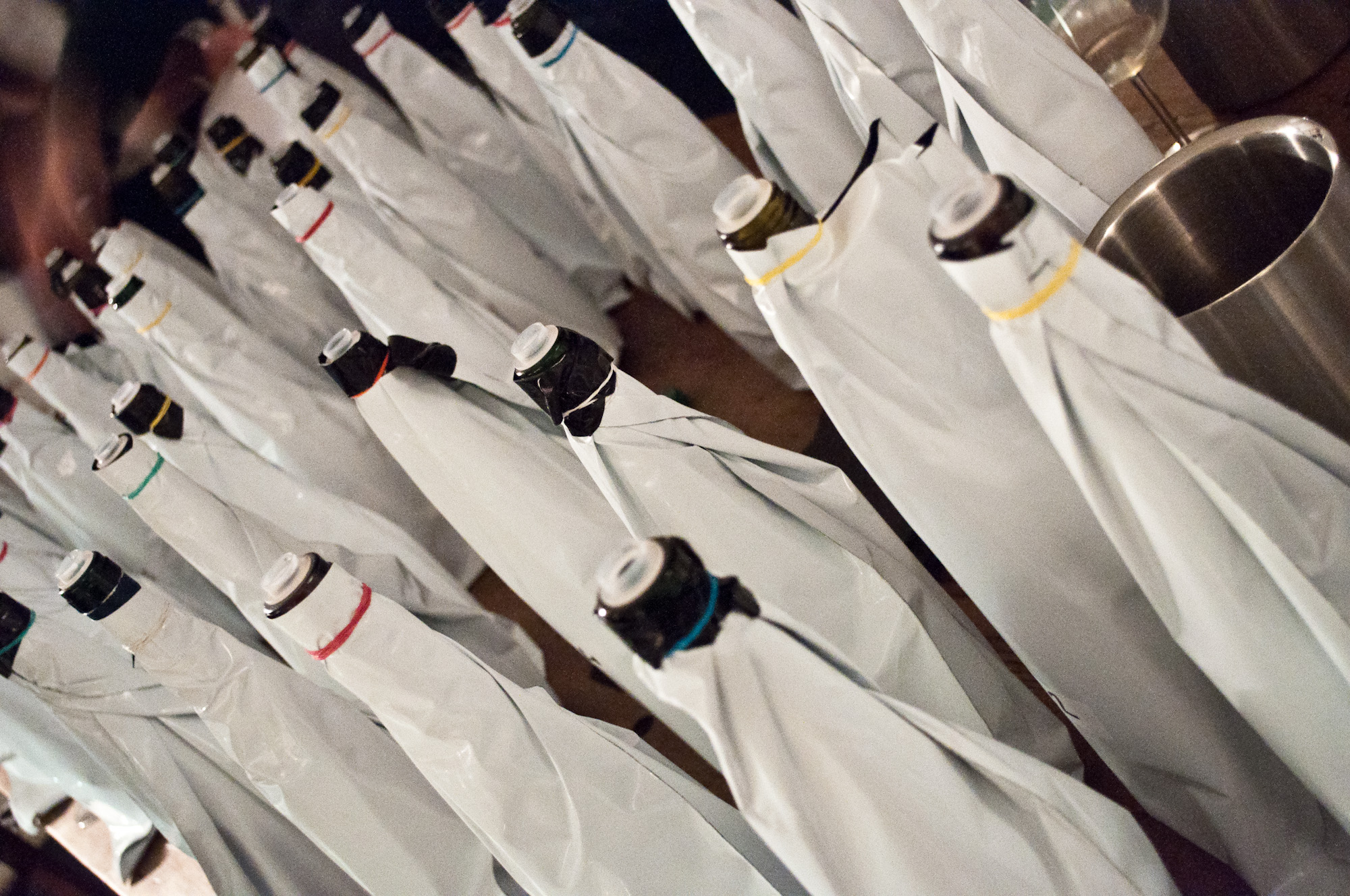
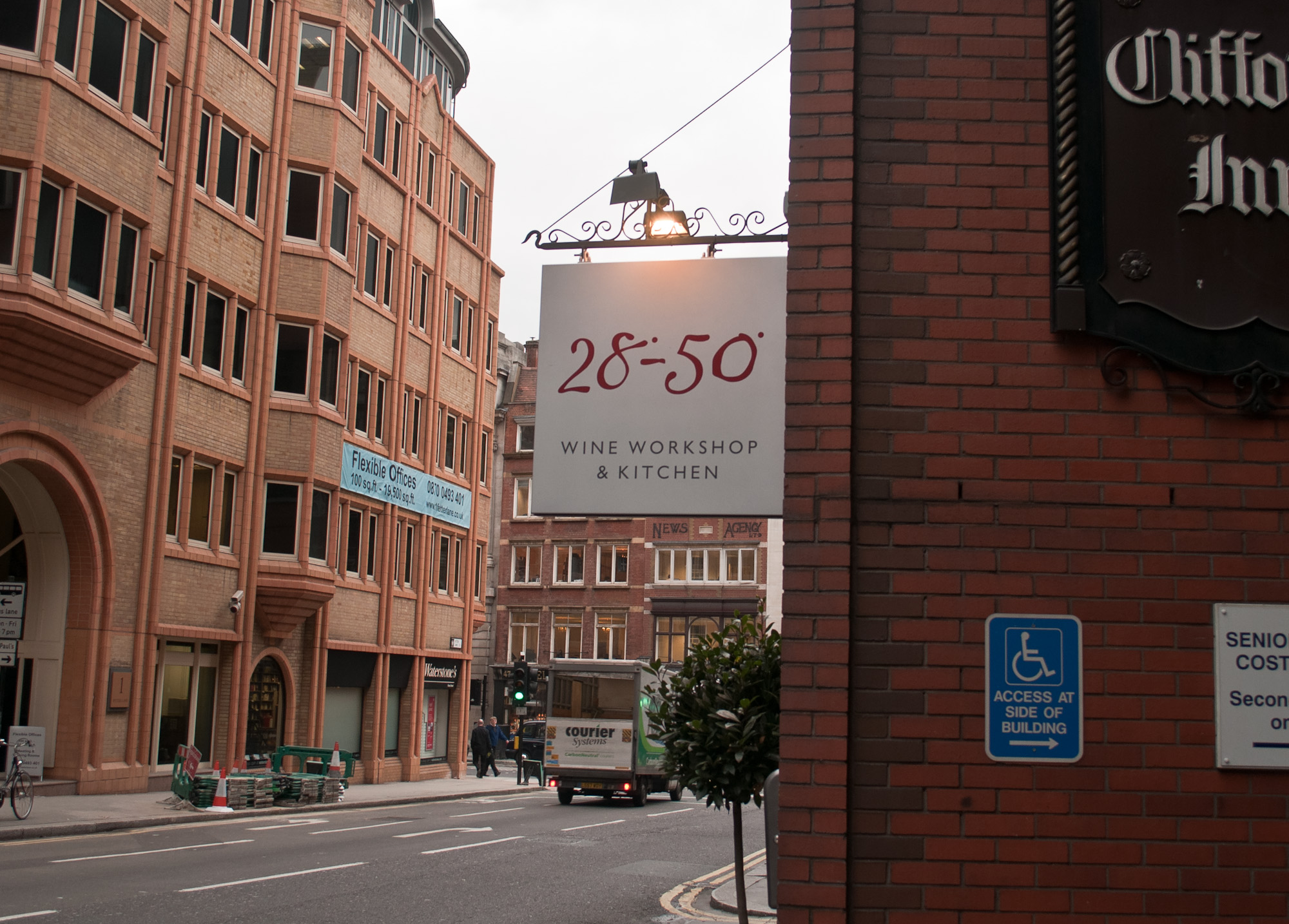
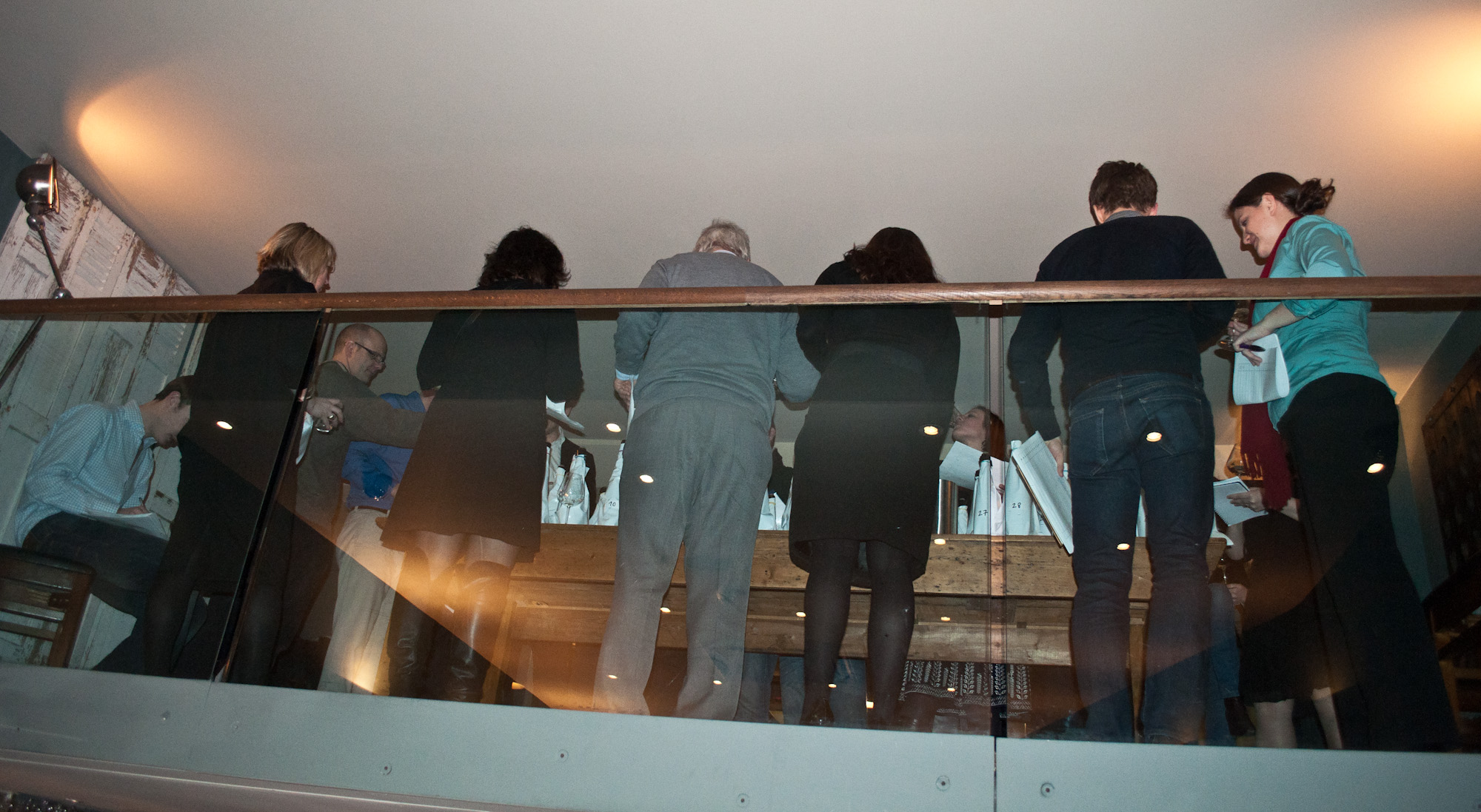
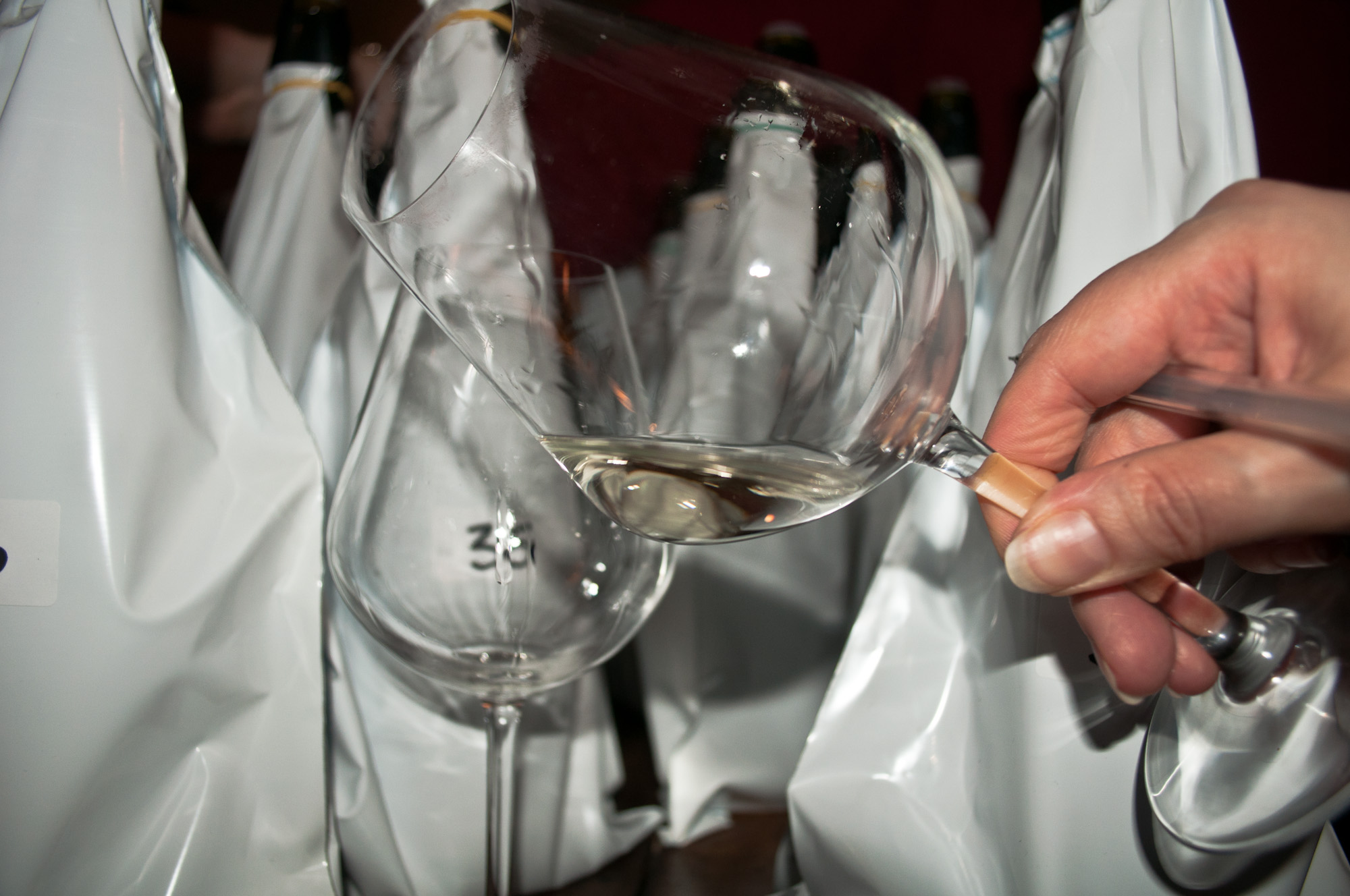
I sat the ten little bottles on the drainboard Picked up the first bottle, pulled the cork out of it And poored it down the sink That is, um, all except one little swallow - which I drank
Had I put together such a tasting I would probably have sneaked in a few non-Rieslings, just to make things more interesting. An aged Grüner Veltliner for instance, Chenin Blanc perhaps or Hunter Valley Semillion? Luckily, Robert was not as devious, but deciding on the sequence of the wines still cannot have been easy. Eventually, when the identity of the wines was revealed we learned that he had choosen to organise by region, beginning with Alsace, then moving on to Germany (Saar, Mosel, Pfalz, Rheingau, Rheinhessen, Nahe), Austria (Kamptal, Kremstal, Wagram, Wachau), Italy (one from Alto-Adige), USA (two from Washington), Australia (Great Southern, Frankland, Mount Barker, Clare Valley, Eden Valley, Tasmania, Adelaide Hills), New Zealand (Marlborough, Waipara, Waitaki Valley, Central Otago) and Chile. This made it possible to get an idea of styles and regional differences. 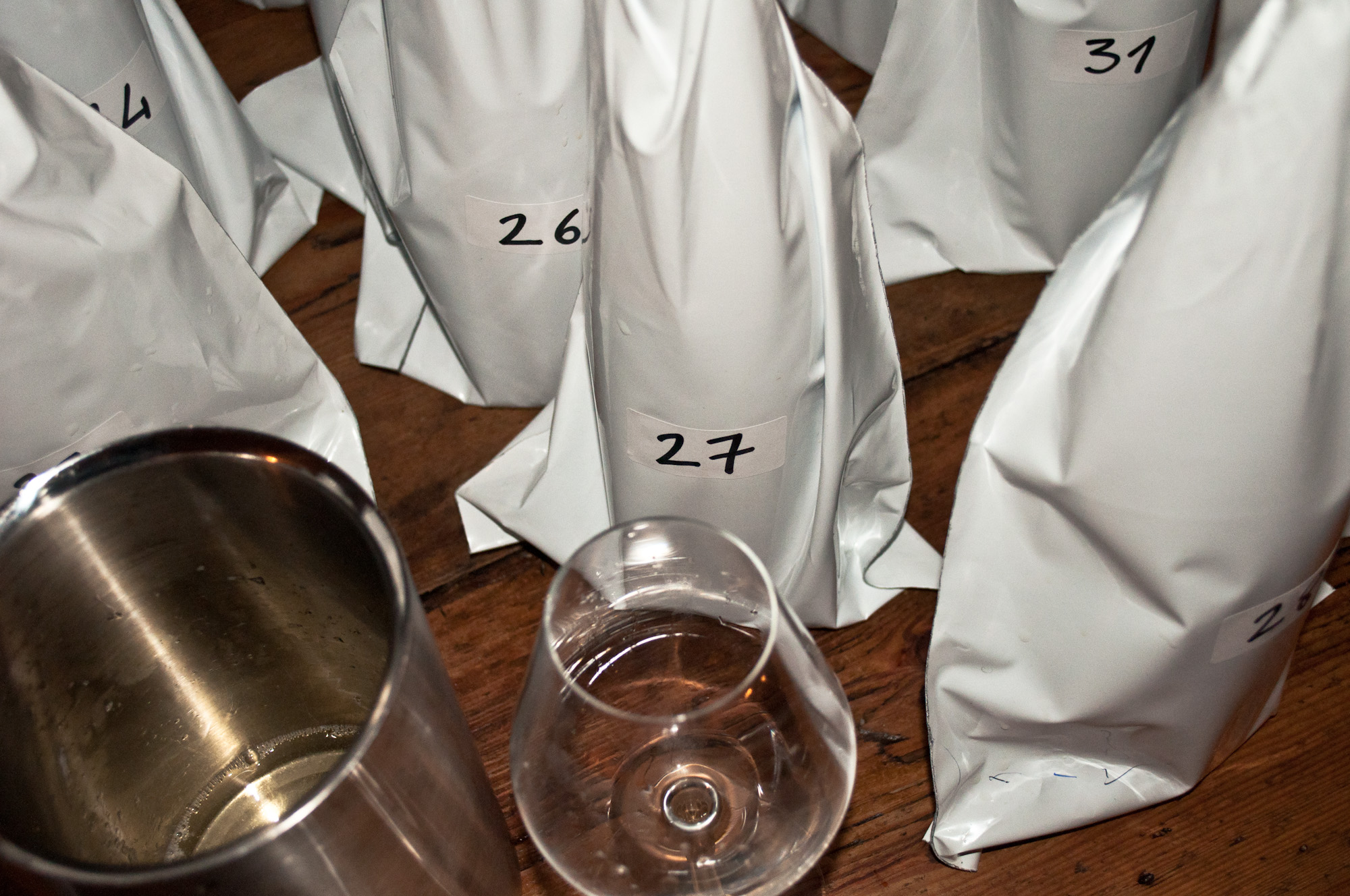
I picked up the next bottle and I pulled the sink out of it And I poured it down the cork All except one little swallow - which I drank
Several tasters commented that they almost gave up writing down 'mineral' or 'great acidity' because so many wines had these characteristics. That was true, but then the nuances make all the difference. Is the minerality more stony, flinty or earthy and smoky? Does the wine taste of stone or salty sweat from a lover's neck? Not all wines were that interesting and we had a couple of cases of cork or wine fault, but the dynamics of Riesling acidity brought a lot of delight. Before the tasting began we were asked to score the wines and to pass our three favourites on to the organiser. If it comes to scoring tastings I remain sceptical, and I usually like to take the time to get properly acquainted with each wine. With so much to taste and the venue so very lively that was not possible (on a few occasions I even had problems getting to a spittoon, which left my Riesling filled mouth tingle with citrus mineral for a while), so I am not going to publish any scores here - I am also not to sure who beyond the wine trade actually cares whether a wine is rated 16.5 or 17. 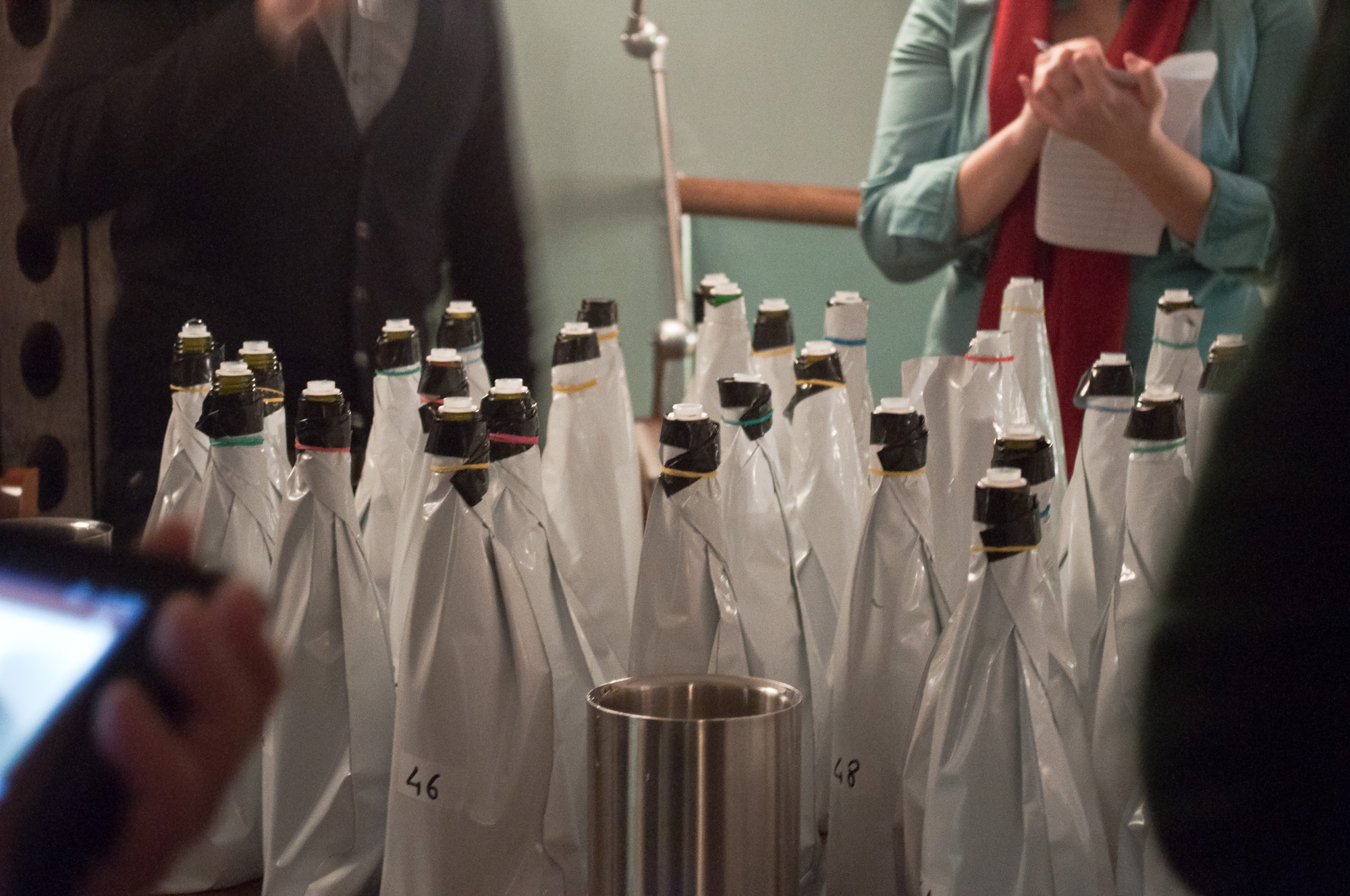
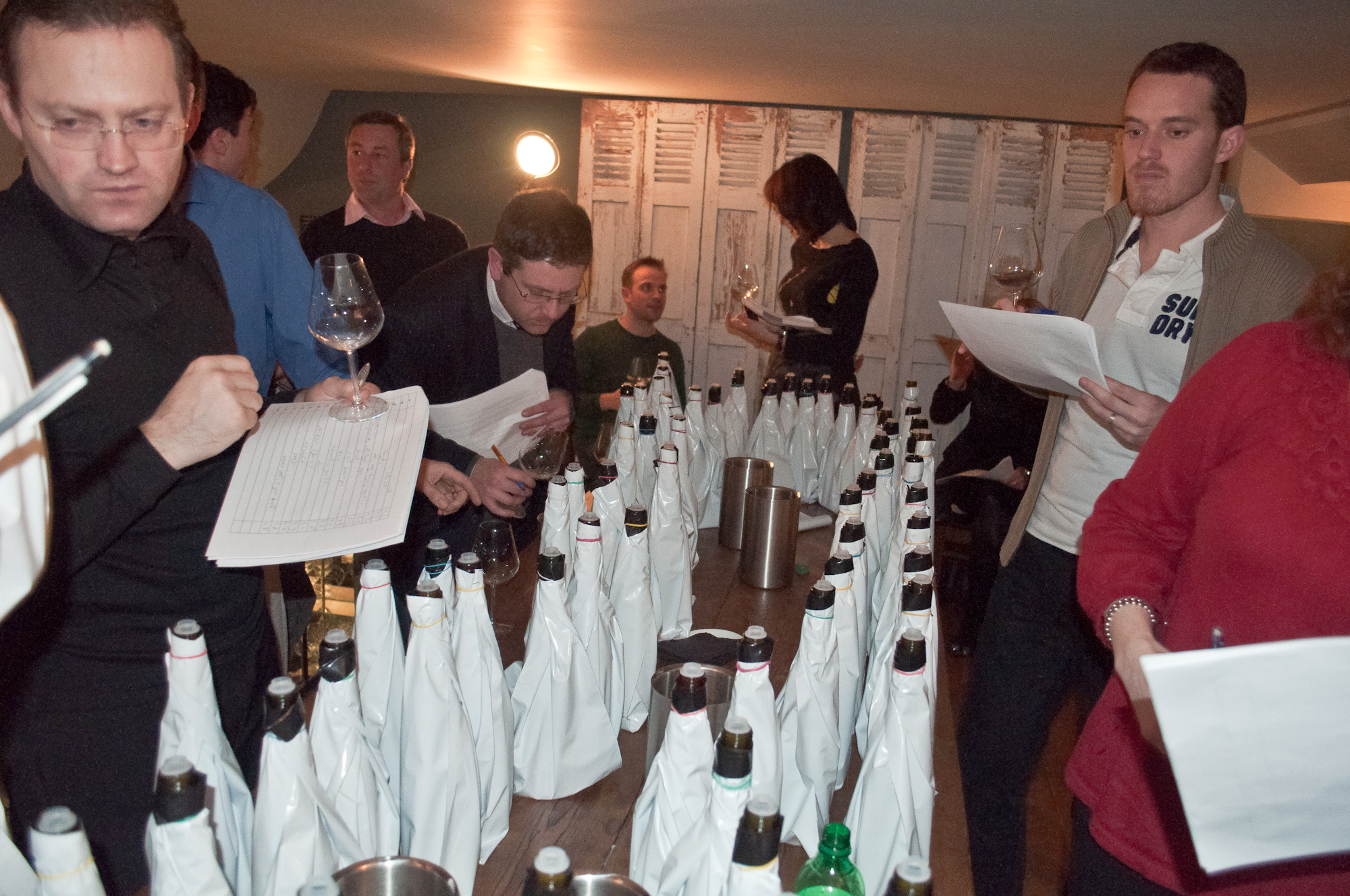 Other favourites included: - 2008 Reiterpfad GG Riesling from Reichsrat von Buhl (Germany, Pfalz; 12.5% and 7.8g - GWW £28.50), great bouquet of deep, chalky mineral, peach and herb and fantastic smoky mineral finish - 2010 Skillogalee, Hand Picked Riesling (Australia, Clare Valley: 13.2%, 0.5g - Enotria/GWW £11.50), dry, flowery with precise apple and stone fruit - 2004 Peter Lehman, Wigan Reserve Riesling (Australia, Eden Valley; 12.5%, 5g - Enotria/GWW £13.50), nicely aged Riesling with concentration and pleasant spiciness
Other favourites included: - 2008 Reiterpfad GG Riesling from Reichsrat von Buhl (Germany, Pfalz; 12.5% and 7.8g - GWW £28.50), great bouquet of deep, chalky mineral, peach and herb and fantastic smoky mineral finish - 2010 Skillogalee, Hand Picked Riesling (Australia, Clare Valley: 13.2%, 0.5g - Enotria/GWW £11.50), dry, flowery with precise apple and stone fruit - 2004 Peter Lehman, Wigan Reserve Riesling (Australia, Eden Valley; 12.5%, 5g - Enotria/GWW £13.50), nicely aged Riesling with concentration and pleasant spiciness
I picked up the next sink and I pulled the cork out of it And I poured it down the bottle All except one little swallow - which I sank
Overall I found the wines from Alsace very consistent in style and quality, with great Riesling from Trimbach, Weinbach and Ostertag, among others. The German selection was not as consistent, but contained adorable wines and old favourites (such as Van Volxem, Schloss Vollrads and the inevitable Dr Loosen). It was a shame that we did not see more of the fantastic sweet Rieslings from the Mosel - but then it is good to find Germany's dry wines appreciated for a change. With a couple of exceptions I found Australia to be of high quality and very consistent - better than New Zealand, in fact, even though there were some NZ wines I really liked (2009 Dry River Craighall Riesling). Overall the sweeter wines from NZ did not really impress me (with the exception of the Spy Valley 2007 Envoy). An interesting surprise was the Kung Fu Girl Riesling that I recently had reviewed a little less than favourably. The acidity that I found troublesome when drinking the wine on its own made it stand out better during the very short encounter at Ravenous for Riesling. Again this emphasises what is good but also what is problematic with tour de force blind tastings, and how important the sequence of wines can be for influencing the impression a wine makes.
I picked up the next drink and I pulled the swallow out of it And I poured it down the sink All except one little drink - I think
It was not necessary for Riesling to leave a good impression as far as I am concerned, after all there would probably be no Wine Rambler without Riesling. Even so I found the tasting entertaining and educating. Working my way through 74 wines in a very busy space in less than three hours had something of a tour de force to it though. Thank you, Robert, for putting this together. The last words, like the first, have to go to Johnny Bond:

Wow, sounds like an amazing
Wow, sounds like an amazing event! I love that tasters eventually gave up writing "mineral" and "great acidity." I'm a bit surprised that the favourites were Austrian rather than German of even Alsatian. I do quite enjoy an Austrian Grüner Veltliner on occasion, but perhaps I should try more of their Riesling as well!
In reply to Wow, sounds like an amazing by Lesley
Austrian Riesling
I can highly recommend the Austrians for Riesling. They don't do much in terms of sweet and off-dry, but the top dry Rieslings from good producers are excellent. Prager is one of my favourites, but there are others too.
And with regards to the tasting I can answer your comment in different ways. First of all I don't know any overall scores - It could very well be that if you calculated the average for each country/region Alsace or another one would have won. How much that would actually mean is a different thing though - after all it depends on how representative the selection is. Can you really claim to represent the best of German Riesling without bringing in at least a few of the kings of sweet Mosel Riesling such as JJ Prüm or Haag? Do you represent quality or quantity of Riesling production with 14 from Germany but 21 from New Zealand? The sample just reflects what was available (and interesting) to Robert through the merchants that were willing to provide him with samples. So even if overall Austria would have had the highest score, producers from Alsace and Germany do not have to quake in their boots because of this one tasting.
That all does not change my recommendation: try Austrian Riesling. They are very good.
Results are in
Robert has now published his own summary of the event, including a full list of all wines and the top three wines. Lesley, you can be relieved that other than the two Austrians a German wine also made the top 3, Egon Müller's Scharzhofberg. Germany scored very well in the top range, as did the Alsace, then came Australia.
Too too many wines
Like I told Robert I think it was just too big a tasting. The only reasonable conclusion to draw from the top scoring wines is 'These wines show well in a big blind tasting'
I hope he re-thinks the format for next time. The room was super-cramped too (and neither table space nor clipboard made my tasting notes pretty perfunctory - stonking sinus infection didn't help either I guess) though I'd imagine Xavier provided it gratis and beggars can't be choosers.
Final gripe my god it ticks me off when people won't admit/can't tell if a wine is corked. There are 74 wines, the moment someone complains pull the bottle, there are lots of others!
It's a shame because there were loads of interesting wines that deserved a more considered approach, I think it was ultimately a little disrespectful
In reply to Too too many wines by Andrew Connor
Re: Too too many wines
It was very crowded, no doubt. As I said I struggled repeatedly to get my hands on a spittoon - which admittedly led to a few funny failed attempts at communication with a mouth full of Riesling, a camera in one and a glass and a notebook in the other hand, plus my begging eyes focussed on a spittoon.
So I won't argue with the points you raised, but my personal summary is more positive as the event (despite doing a little too much) introduced me to some interesting wines and reminded me to keep an eye on Australian Riesling (which I sometimes tend to forget). It also was an interesting experience as I had never attended an event like it. However, with the next tasting focussed on a grape variety I know less about than Riesling I would even more appreciate more space and less wines.
You make a very interesting point with your comment: 'These wines show well in a big blind tasting' - is that not a general issue with tasting events? In the same way as IQ tests do not actually show you how intelligent someone is, but how good they are at dealing with IQ tests. For instance, if you want to do wines real justice, shouldn't you taste them over at least two days - or how do you judge wines that really need time to open up? Based on your skill to estimate how much the wine may improve with air? Similarly, not all wines want to be drunk at the same temperature, not even Rieslings, whereas new bottles fresh from the fridge will be colder than those that have been out for longer.
For these and many other reasons I see such events as very different from an in-depth conversation with individual wines. Those general points aside you are right to say that more space would have made much difference.
In reply to Re: Too too many wines by torsten
A very measured response,
A very measured response, I'll climb off my high horse now
I guess an analogy could be made with the surfeit of 09 Burgundy tastings, even more pronounced in that case as so many of them weren't even finished wines. Interesting to gain a general impression of the vintage but not much more.
But it just seems like an opportunity squandered
The blind tasting format also arbitrarily excludes eccentrically shaped bottles so no delicious (and under appreciated) Franken Riesling here
In reply to A very measured response, by Andrew Connor
Tastings
Interesting that you mention Burgundy - for that reason I focussed my recent post on an En Primeur tasting more around photos than rankings (although to be fair this was also because I don't know Burgundy well enough to feel I should join the ranks of those telling people what to buy).
Some tastings are more for getting a general impression, and in this respect Ravenous for Riesling worked for me - which is not to say that it would not have worked better with less wines and more space. Anyway, I think we agree on all points, the difference seems to be that you (perhaps rightly) took it more seriously than I did. I really am a "slow" taster, so am always more restrained when voicing my opinions on tastings with many wines.
If Franken wines were excluded because of the bottle shapes that would be very sad though - after all you can easily fill the wine into another bottle. We have done that in the past for our, much much smaller, Wine Rambler blind tastings and it really does not require much effort.
In reply to Tastings by torsten
A pedant might say that
A pedant might say that decanting, and hence oxygenating a wine, would be unfair to the rest of the wines in the flight. The solution would be to do it to all the wines, it might be a good solution actually but rather challenging logistically
In reply to A pedant might say that by Andrew Connor
Fair enough. On the other
Fair enough. On the other hand, some wines were replaced during the tasting on account of being corked, and some bottles were replaced earlier than others, so there was a temperature and breathing time difference anyway. In that sense moving one Franken wine from bottle to bottle would probably not have skewed the results too much...